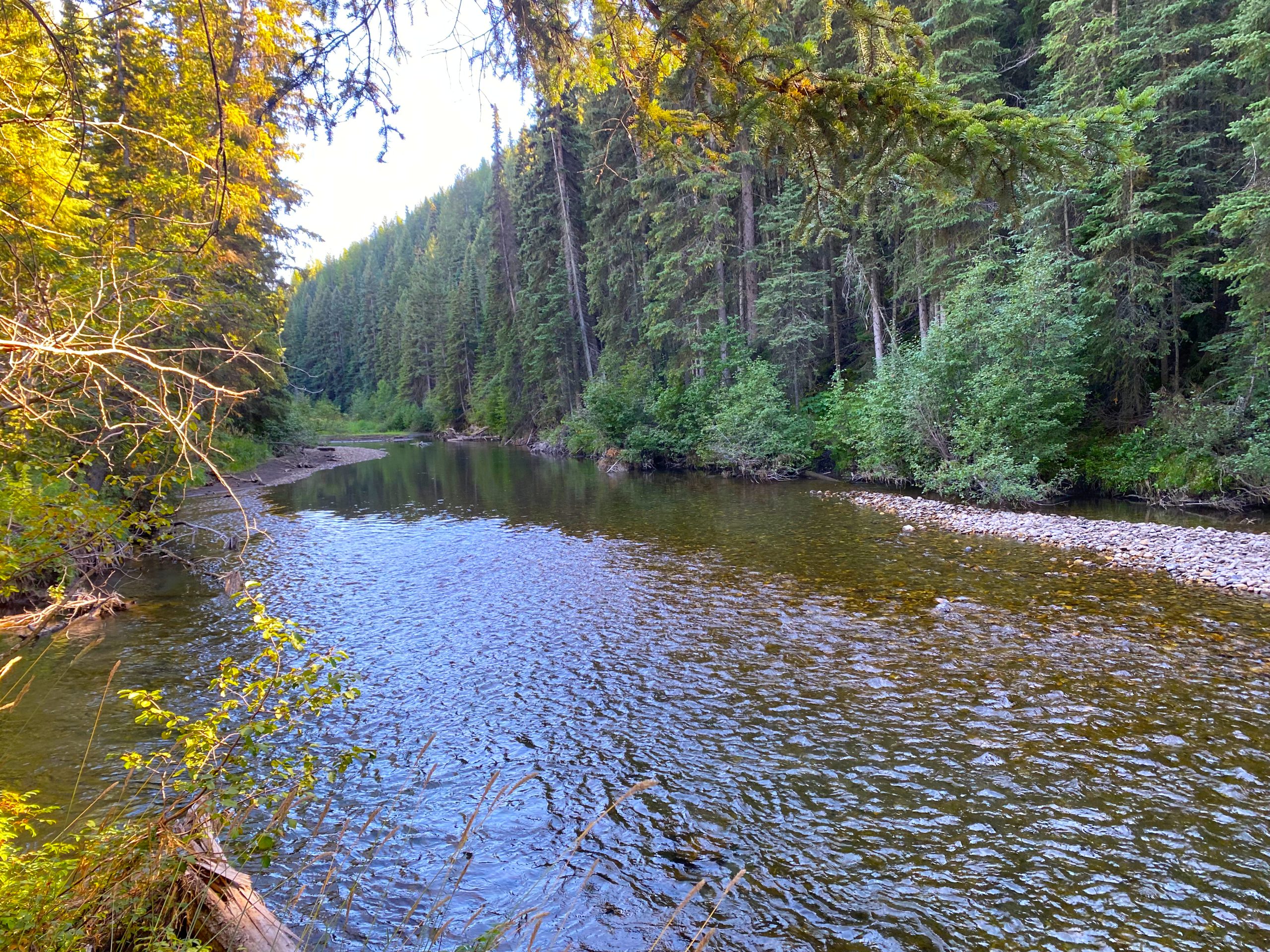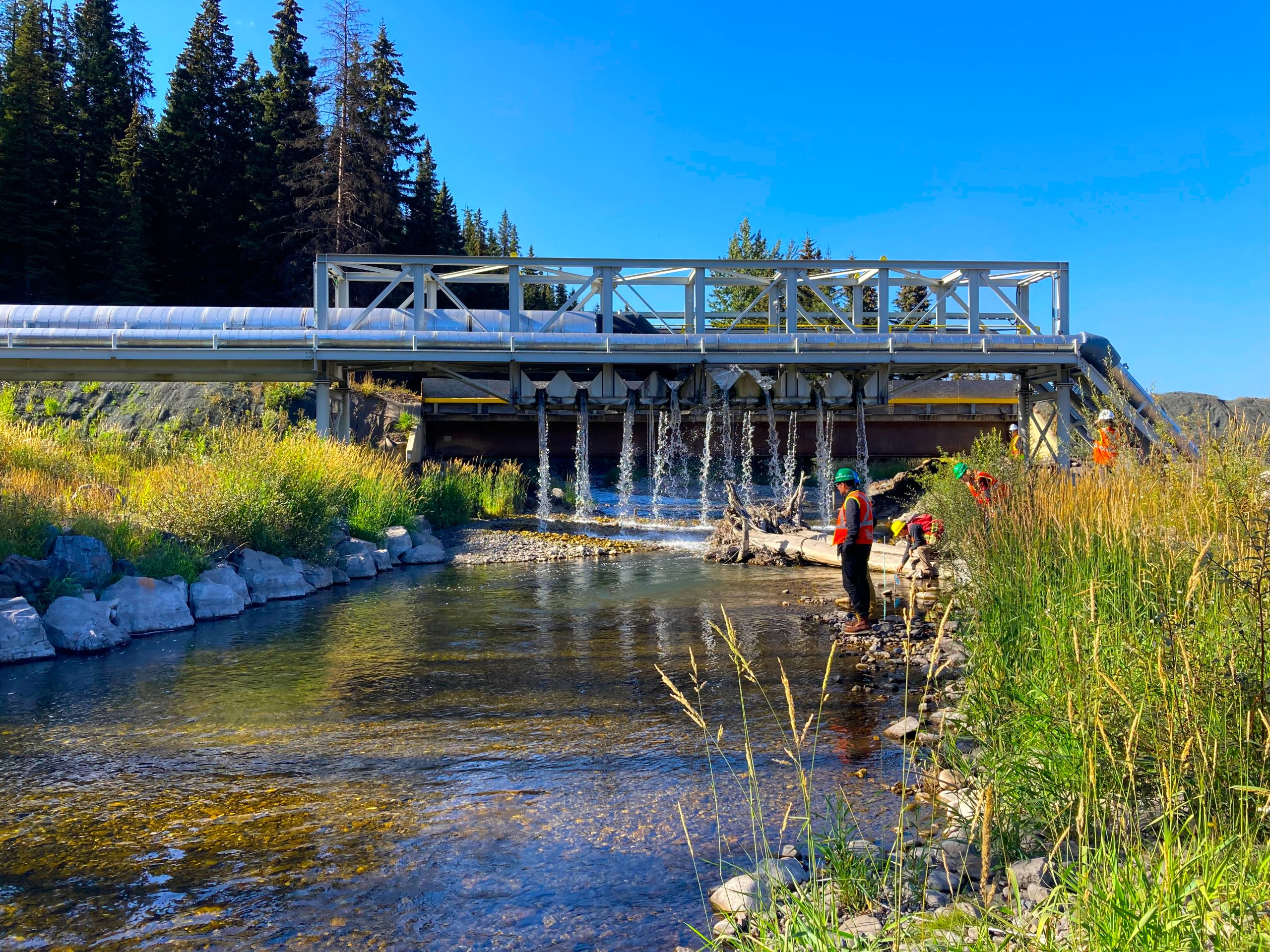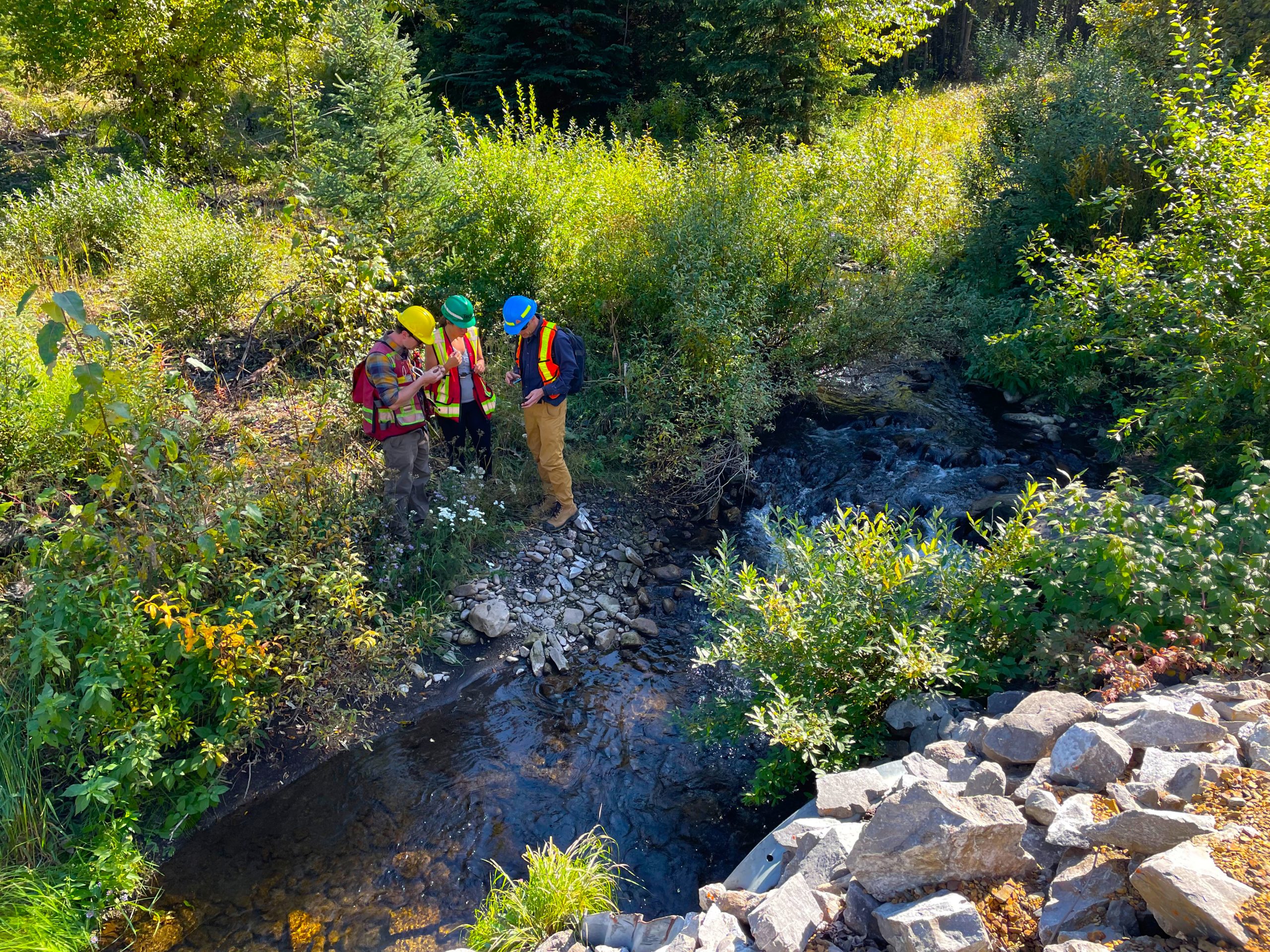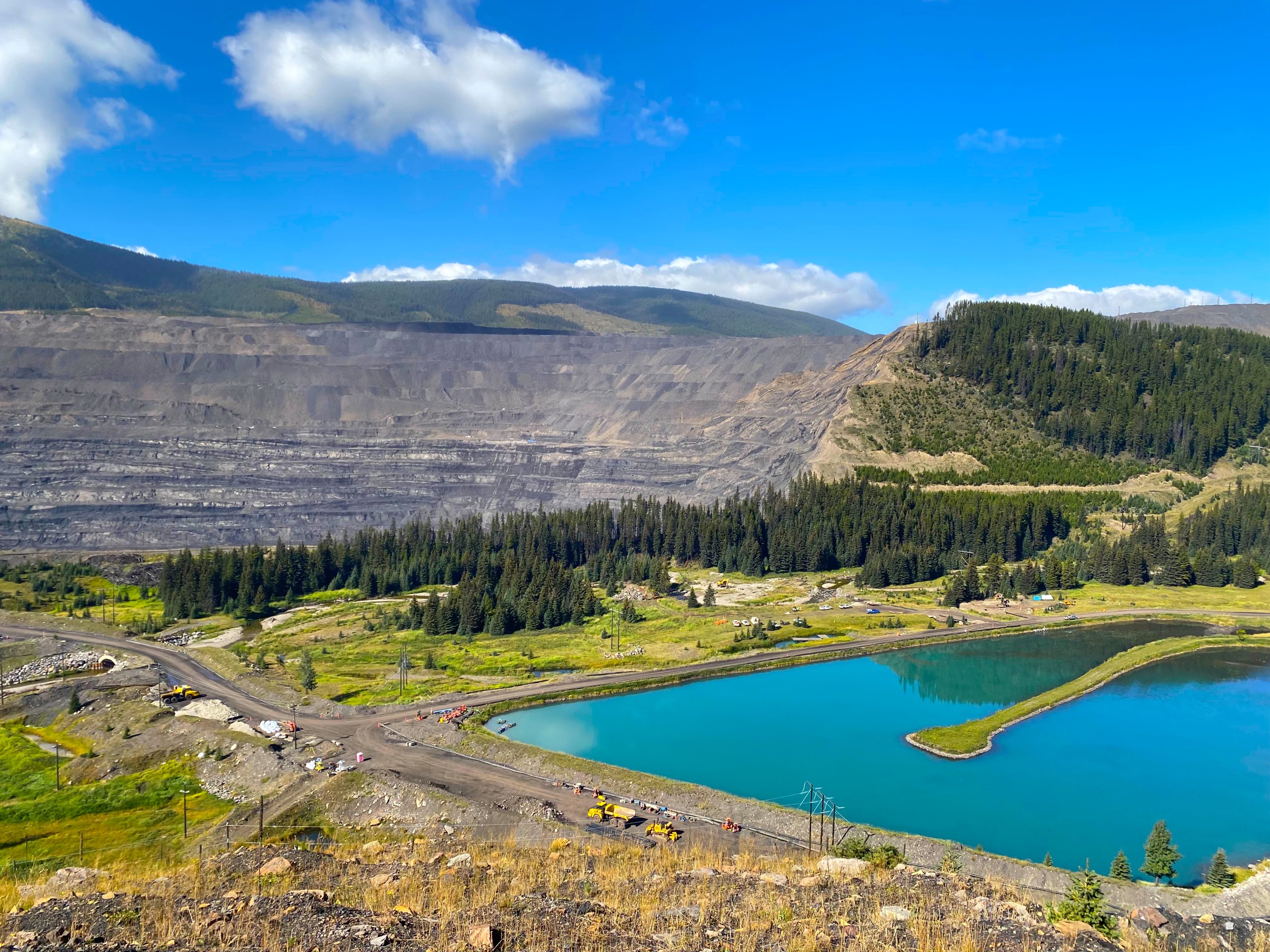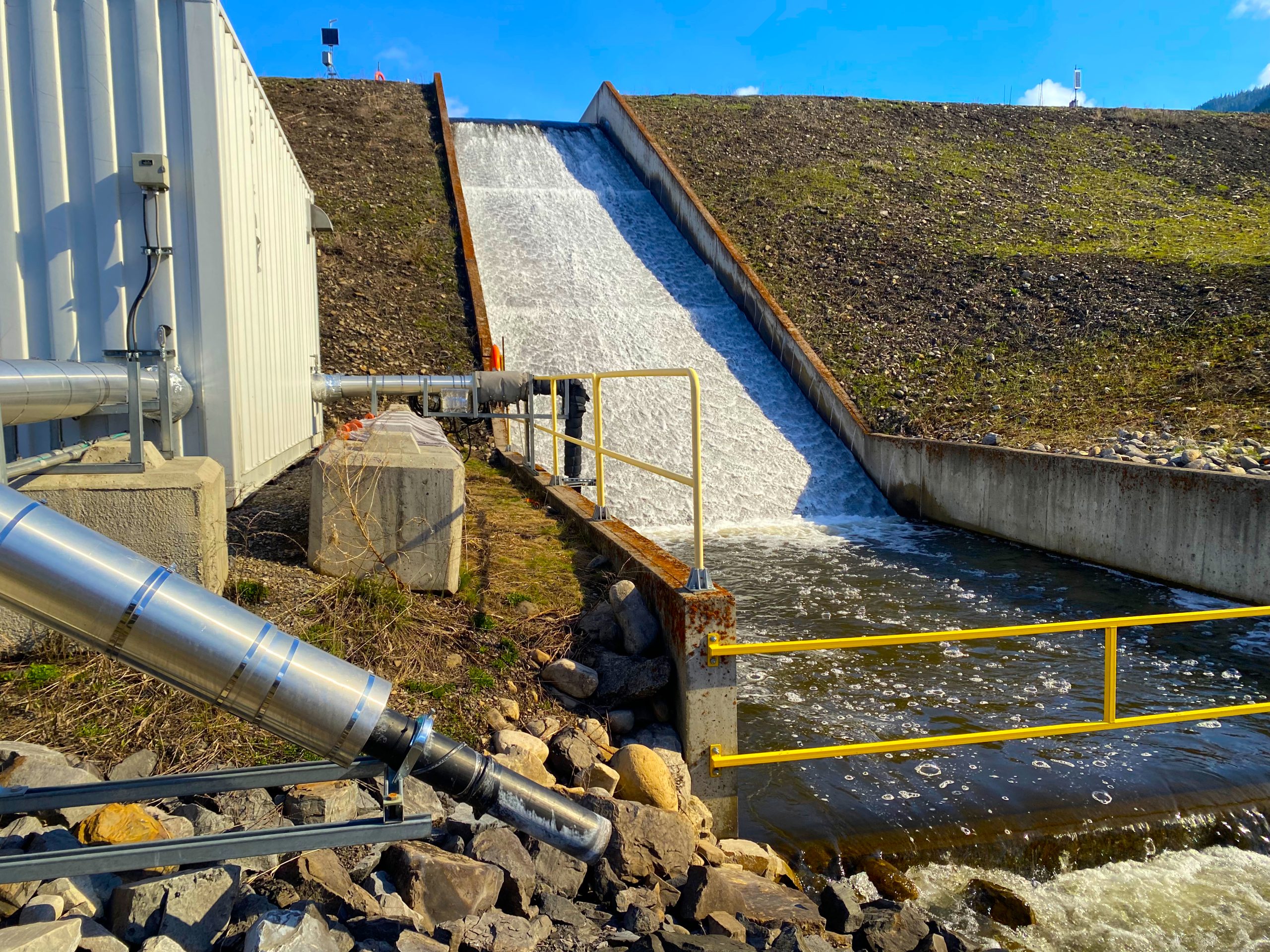Updated November 2023
On this page
Highlights
Permit 107517 requires EVR to monitor and report on aquatic and ecosystem health. Fish and aquatic insects are extensively monitored to understand how the ecosystems respond to changing water quality.
Several direct measurements and indicators are used to determine whether impacts are occurring in Elk Valley waters and whether there are positive or negative trends over time.
Direct measurements of impact include:
- Numbers of aquatic insects
- Types (community) and abundance of aquatic insects
- Numbers of fish
Important indicators of risk or potential for impacts include:
- Concentrations of substances in water
- Concentrations of substances in aquatic insect tissue
- Concentrations of substances in fish tissue
- Laboratory tests conducted by exposing aquatic plants, insects, and fish to Elk Valley waters
- Measurements of calcite
Monitoring programs are designed to assess conditions on a local scale close to the mines, and also further downstream where the influences of more than one mine combine.
Monitoring in 2022 has re-confirmed that the smaller tributaries located closest to the mine sites showed the most significant mine-related impacts. Key indicators in most mainstem river locations have also not shown a significant change from year to year. Results are generally as expected based on scientific models and predictions.
In 2022, like in previous years, impacts to aquatic insects were primarily detected in locations near the mine sites. Communities of aquatic insects in mine impacted areas are measurably different from streams without mining. For example, in the Upper Fording River, an area located close to the mine sites and impacted by mining, there are fewer sensitive species such as mayflies compared to further downstream in the Elk River.
After a dramatic decline in 2019, fish populations in the upper Fording River and Harmer Creek began showing signs of recovery in 2021. Fish numbers continued to increase in 2022.
Monitoring reports include supporting information used to evaluate impacts in 2021.
A visual display of 2022 monitoring results for important indicators is available on the Data Dashboard.
Data and details
All monitoring activities are overseen by the Environmental Monitoring Committee. Each year the committee reviews and summarizes key results and highlights for the previous year.
- 2023 Public Report
- 2022 Public Report
- 2021 Public Report
- 2020 Public Report
- 2019 Public Report
- 2018 Public Report
- 2017 Public Report
- 2016 Public Report
- 2015 Public Report
Aquatic insects
Aquatic insects are monitored extensively throughout the Elk Valley:
- In 2022, aquatic insects were assessed in 40 mine-exposed mainstem river areas
- For example: Fording River, Elk River and Michel Creek
- 63% of monitoring sites showed changes to the insect community
- 72% of sites showing a change were in the Fording River, confirming that mining activities continue to influence this portion of the watershed
Monitoring in 2022 found a higher proportion of sites indicating changes to the insect community compared to 2021. Monitoring also found that the amounts of insects in mine affected areas are consistent with non-mine affected areas, but the types of insects are different than in areas without mining.
Aquatic insect community results can be viewed on a map in the Data Dashboard.
Insect communities are resilient. Studies show they often recover once their habitat improves. Continued implementation of the Elk Valley Water Quality Plan is resulting in more operating water treatment facilities that are starting to improve downstream water quality. This is expected to support the recovery of aquatic insect communities, so they resemble streams without mining. As more water is treated, the B.C. government will continue to pay close attention to the downstream aquatic insect communities to confirm they are responding as expected.
EVR is required to monitor and report the concentration of selenium in the tissues of aquatic insects. In most reports, this measurement is called benthic invertebrate tissue (BIT) selenium concentration. Aquatic insects are collected in Elk Valley streams and sent to a certified laboratory to test the concentrations of substances such as selenium. Tissue concentrations are compared to science-based thresholds to understand the risk of exposure to insects and to fish that eat the insects. These monitoring results have helped guide actions that reduce aquatic health risks from selenium.
Learn more about 2022 monitoring results in EVR’s Local Aquatic Effects Monitoring Reports for Elkview Operations, Fording River Operations, Greenhills and Garinde Operations, Line Creek Operations, Coal Mountain Mine and Line Creek Operations Dry Creek.
Fish
Fish Populations
Fish population monitoring programs provide estimates of populations in some of the areas close to the mines. Areas include the upper Fording River and select tributaries, including Greenhills Creek, Dry Creek (at Line Creek Operations), Line Creek, and Harmer Creek (at Elkview Operations). B.C. government fisheries biologists in the Ministry of Water, Land and Resource Stewardship are currently developing a program to conduct fish population monitoring in the Elk River.
Fish measurements recorded in these monitoring programs include:
- Population size
- Body condition
- Growth
- Fish tissue selenium concentrations
- Observations of abnormalities
In the Elk Valley, fish population monitoring programs use Westslope Cutthroat Trout as an indicator or sentinel species to detect signals of environmental change.
Westslope Cutthroat Trout monitoring and conservation efforts
Westslope Cutthroat Trout live throughout the Elk Valley, including the upper Fording River above Josephine Falls, where other fish species are not present. Every year this population is monitored using snorkel floats, electrofishing, angling surveys, redd counts, radio tagging, dip netting and underwater videography, making it one of the most studied populations of fish in B.C.
Monitoring revealed that the upper Fording River population experienced a dramatic decline in 2019. Impaired access to overwintering habitat and rapid, prolonged freezing in shallow areas are believed to have killed large numbers of fish that became stranded in shallow areas.
Poor water quality may have also contributed to a low survival rate during this stressful weather event.
Since the 2019 decline, a lot of work has been undertaken to understand the causes and to support population recovery.
Learn more about the cause of the upper Fording River Westslope Cutthroat Trout population decline.
The figure below is the from the Environmental Monitoring Committee’s annual report. Monitoring in 2022 showed an increase in fish numbers since 2021 and confirmed the population is recovering. The B.C. government will continue to closely monitor the recovery of this population of interest.
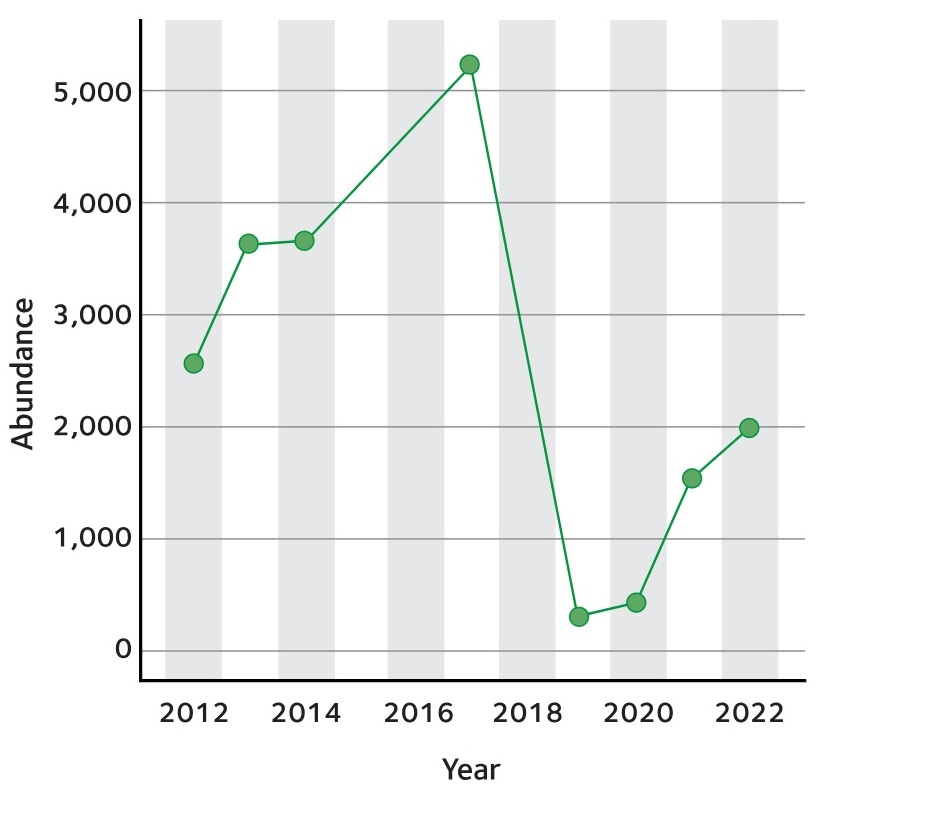
Source: Environmental Monitoring Committee 2023 Report
Fish tissue and abnormalities
Fish tissue and abnormality monitoring is conducted throughout the Elk Valley every three years.
In areas with slower-moving water, fish accumulate more selenium in their muscle tissue. Tissue sampling is carried out to better understand where in the Elk Valley selenium accumulation is occurring. It also helps identify if there is a linkage with fish health indicators such as overall fish condition or growth abnormalities.
Observations to date indicate that fish condition and the frequency of abnormalities are similar in areas with and without mining. This pattern suggests that the Elk Valley mines are not causing a measurable change in fish health. Fish health remains a priority area for monitoring and assessment, recognizing the sensitivity of Elk Valley fish populations to a range of stresses.
Learn more about fish health and population monitoring.
Calcite
Calcite is a hard calcium-based mineral that forms on riverbeds and can impact the aquatic ecosystem by reducing habitat for aquatic insects and fish. Where calcite deposits are thick enough, it cements the stream pebbles together, impacting the ability for fish to make nests (redds) for egg-laying and filling-in the small spaces inhabited by aquatic insects.
Calcite is monitored annually in streams throughout the Elk Valley. This helps to identify impacts and determine where calcite treatment should be implemented.
In 2022, calcite was assessed across 375 km of Elk Valley waters:
- Calcite decreased in mainstem rivers in 2022 compared to 2021
- Calcite is increasing over time in some mine impacted tributaries – 4 of these tributaries have been selected as priority areas for management: Greenhills Creek, Corbin Creek, Dry Creek and Erickson Creek
Calcite treatment facilities can prevent calcite formation; however, removing existing calcite concretion without causing impacts to aquatic ecosystems remains a challenge.
The figure below is from the Environmental Monitoring Committee annual report report and shows calcite trends in Elk Valley areas impacted by mining and areas unimpacted by mining (reference streams). The Calcite Index Scores indicate how much calcite has deposited in a stream. Higher numbers mean more calcite, up to a maximum score of three (indicating severe calcite concretion). The figure shows a decrease in calcite starting in 2020, which is potentially associated with implementation of calcite prevention facilities. There are now 8 calcite prevention facilities operating in the Elk Valley, with an additional 8 planned before 2030.
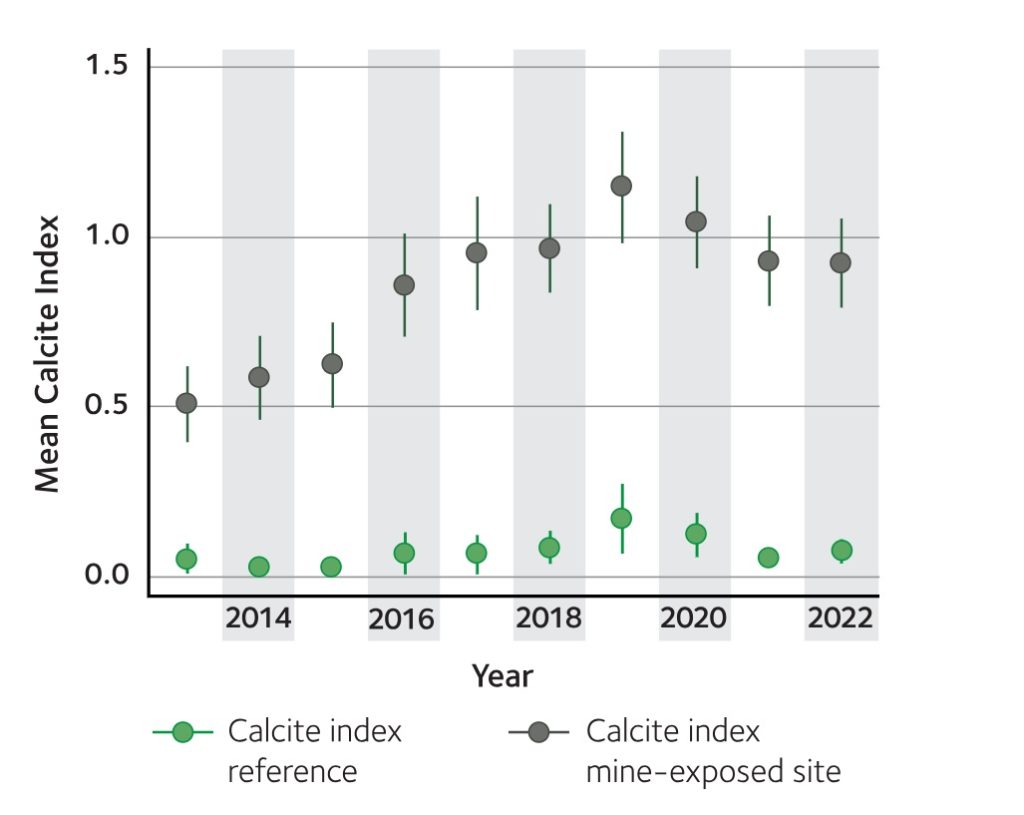
Source: Environmental Monitoring Committee 2023 Report
The Data Dashboard displays 2022 calcite index scores for specific sites on a map.
Learn more about calcite monitoring and management.
Learn more about monitoring programs in the Elk Valley
Explore this topic
The B.C. Public Service acknowledges the territories of First Nations around B.C. and is grateful to carry out our work on these lands. We acknowledge the rights, interests, priorities, and concerns of all Indigenous Peoples – First Nations, Métis, and Inuit – respecting and acknowledging their distinct cultures, histories, rights, laws, and governments.


